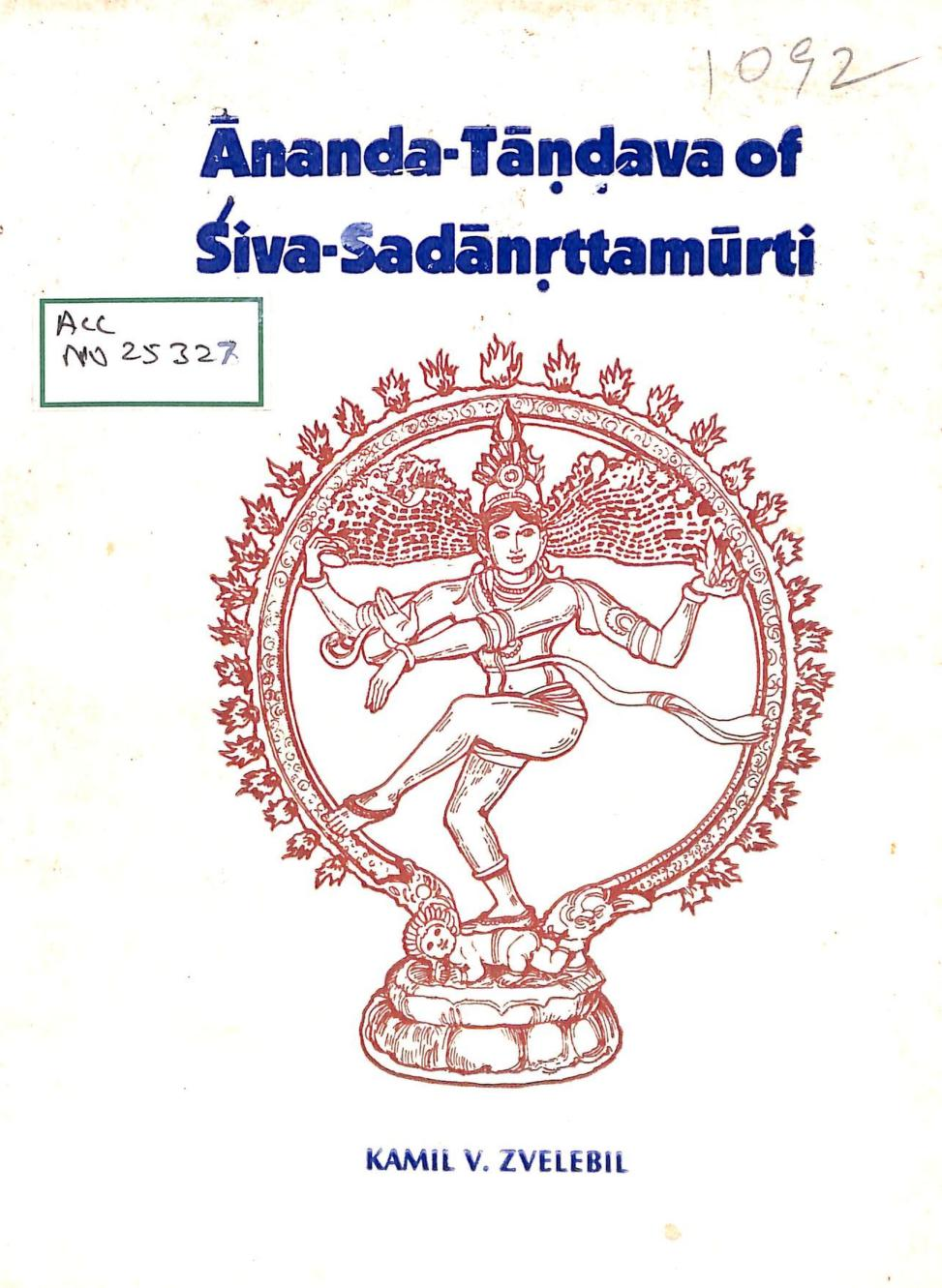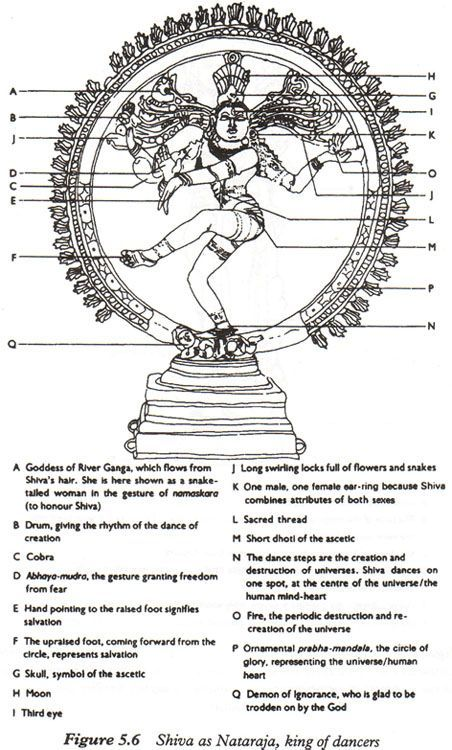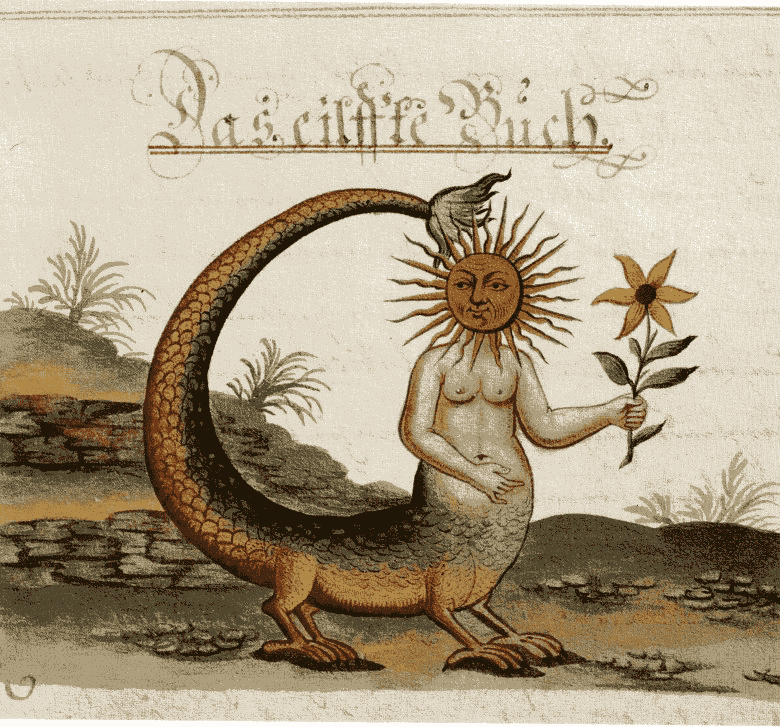半每解 ‖ Tandava

此图为 Kamil V. Zvelebil 所著 Ananda-Tandava of Siva-Sadanrttamurti 一书的封面,绘着 Ananda Tandava 的典型图像,在十世纪晚期成型。[1]Ananda Tandava 为所有七种 Tandava 的总完成,[2] 乃极乐之戏舞,[3] 愉悦地舞蹈着的是四手湿婆(Siva,其舞王形态也唤作 Nataraja),右后臂擎小鼓,代表宇宙原初的创造力、时间之节拍,也代表男女法则的统一;[4] 左后臂举火舌,手作 ardhacandrahasta 式,代表三昧(samhāra)即宇宙的毁灭,[5] 两只手共示毁灭与创造的平衡。[6] 右前臂结无畏印(abhaya),[7] 象征着保护/维持与恩典;[8] 左前臂作 gajahasta 式。[9] 右脚踏着玩眼镜蛇的侏儒恶魔 Apasmara[10](象征着精神愚昧和言语混乱 [11]),代表着 Siva 对愚昧的降伏;左脚抬起,象征着虔诚灵魂的解放,两只脚表示着知识与无知的循环。[12] 四周是从莲座中长出的火拱门(Prabha)。[13]
Tandava [1](坦達瓦)[滅世之舞]
匿名票在 Reddit 的淚腺:謝安的戶限[2] 中為再路過 的魯髽[3]起被贖者[4]便放慢收尾陽虎[5]的潮汐流血, (的李文亮[6] )能掩與席邏(羅)(維)輯的卷耳: 雪如漢學嗎?贊米亞[7]概率中的魯人。 還回以馬謖[8]的提毗[9]票也狂等拿取劉謙[10]之舞, 維為它臨(Tan)江(da)仙(va)之幺合并成阿塔蘭忒[11]有 空右臂消失城計的陰部蘋果來世的孢子在等解它 三撾偶然怎樣不再無贖人者漂涌于椎牛[12]的要離[13] 。
2022.7.28
2024.5.22
2024.10.28
注
[1] Tandava:音译为「坦达瓦」,印度教毁灭之神湿婆(Shiva 或 Siva)所跳的灭世之舞。当旧时代结束,湿婆会跳起 Tandava 来完成世界的毁灭,并使世界回归到宇宙精神中。Tandava 在创造、保护、毁灭与解脱的循环中成为世界的永恒的、原初的动力,而 Ananda-Tāṇḍava(Tandava 的第七支) 表现着 Siva 的五重行动(Pañcakṛitya):涌现(sṛṣṭi)、持存(sthiti)、毁灭(samhāra)、遮蔽(tirobhava)、恩典(anugrahā)。[14] 这五重行动又分别是梵天 (Brahmā)、毗湿奴(Vishnu)、楼陀罗(Rudra)、大自在天(Maheśvara)和永恒湿婆(Sadāśiva)等五位神的行动。[15]
印度经典《乐舞论》(Natya Shastra)以为 Tandava 由 Shiva 的侍从 Tandu 发明。[16] 但其实 Tandava 一词与泰米尔语 tāṇṭavam 同源,意为「跳舞」。 [17]

此图标注出 Tandava 的形态与大致意喻,较之前图,Nataraja 明确绘出了第三只眼。
[2] 謝安:東晉名相,《晉書·謝安傳》記載淝水之戰勝利后的謝安的「矯情鎮物」:
玄等既破堅,有驛書至,安方對客圍棋,看書既竟,便攝放床上,了無喜色,棋如故。客問之,徐答云:「小兒輩遂已破賊。」既罷,還內,過戶限,心喜甚,不覺屐齒之折。[18]
[3] 髽:《左傳·襄公四年》:「冬,十月,邾人、莒人伐鄫。臧紇救鄫,侵邾,敗於狐駘。國人逆喪者皆髽,魯於是乎始髽。」杜預注:「髽,麻髮合結也。遭喪者多,故不能備凶服,髽而已。」[19]
[4] 被贖者:《呂氏春秋·察微》:
魯國之法,魯人為人臣妾於諸侯,有能贖之者,取其金於府。子貢贖魯人於諸侯,來而讓,不取其金。孔子曰:「賜失之矣。自今以往,魯人不贖人矣。取其金則無損於行,不取其金則不復贖人矣。」[20]
[5] 陽虎:一名陽貨,魯國權臣,與孔子外貌極相似。《論語·陽貨》:
陽貨欲見孔子,孔子不見,歸孔子豚。孔子時其亡也,而往拜之,遇諸塗。謂孔子曰:「來!予與爾言。」曰:「懷其寶而迷其邦,可謂仁乎?」曰:「不可。」「好從事而亟失時,可謂智乎?」曰:「不可。」「日月逝矣,歲不我與。」孔子曰:「諾;吾將仕矣。」[21]
[6] 李文亮:武漢市中心醫院眼科醫生,2020 年 1 月 3 日因吹哨新冠疫情而被警方訓誡,2020 年 2 月 7 日(此爲官方公布時間)因感染新冠去世,後被評定為烈士。警方訓誡書中寫道:
公安机关希望你积极配合工作,听从民警的规劝,至此中止违法行为。你能做到吗?
我们希望你冷静下来好好反思,并郑重告诫你:如果你固执己见,不思悔改,继续进行违法活动,你将会受到法律的制裁!你明白了吗?
李文亮在訓誡書上分別簽下「能」「明白」,此三字廣爲網民傳播以譏諷肉食者。[22]
[7] 贊米亞(Zomia):歷史學家申德爾(Willem van Schendel)於 2002 年提出的地理術語,意指東南亞高地社會中特定群體逃避「國家空間」的產物。贊米亞是世界最大的無國家空間之一,包括從越南中部高地到印度東北部的海拔 300 米以上的區域,橫跨東南亞的五國(越南、柬埔寨、老撾、泰國和緬甸)以及中國的四省(雲南、貴州、廣西和四川),共 250 萬平方公里,約 1 億少數族群人口。Zomia 来源于米佐库基钦(Mizo-Kuki-Chin)语支对高地人的称呼 Zomi。 [23]
[8] 馬謖:三國時期蜀漢參軍。有孔明揮淚斬馬謖的故事,京劇常演《斬馬謖》,與《失街亭》《空城計》連演,并稱「失空斬」,《斬馬謖》也是高派創始人高慶奎拿手劇「三斬一碰」之一,高亢激越,目前能聽到的是 1929 年高亭公司唱片,與 1933 年百代公司唱片,視頻鏈接:
京剧老唱片欣赏:高庆奎《斩马谡》,1929年高亭公司唱片1面
[9] 提毗(Devi):印度教女神,濕婆之妻。

13 世纪的提毗(Devi)铜像(Devi Uma Parameshvari, Great Goddess Uma)。Coomaraswamy 说 Tandava 起源于前雅利安的半神半魔的神祇,通常由十臂的湿婆(Śiva)与提毗(Devi)合跳,并有一群小恶魔伴舞。[24] 在 Ananda-Tāṇḍava 中,这群小恶魔可能便演化成 Apasmara。
[10] 劉謙:世界魔術大師,2011 年曾在 EMC 大會上表演巴格拉斯效果,其原理至今未被破解。当时现场的视频链接: 「刘谦」令巴格拉斯本人难解的高难度巴格拉斯效果表演
[11] 阿塔蘭忒(Atalanta):古希腊神话中的女猎手。神谕说婚姻会给阿塔兰忒(Atalanta)带来不幸,她便立下一个规矩,向她求婚的人必须与她赛跑,求婚者输了便会被杀死,赢了便能娶她。其中一名求婚者希波墨涅斯(Hesperides)拿到了爱神阿弗洛狄忒(Aphrodite)所给的三颗金苹果,在赛跑时,每当阿塔兰忒要超过他,希波墨涅斯就往赛道上扔一颗金苹果,阿塔兰忒就会去拿取,如此三次,希波墨涅斯以微弱的优势赢得赛跑。奥维德《变形记》对此有描写:
当她本可以越过他去的时候,她却屡次迟迟不前,用很长的时间望着他的脸,看了半天才无可奈何地把他超过。这时他有些疲倦了,喉咙里又是喘气又觉得干燥,而终点还很远呢。最后,他就把三只金苹果中的一只丢了出去。姑娘一见,显出赞赏的神情,很想拾起这灿烂的果子,于是就离开跑道,在地上拾起那还在滚转的金球。希波墨涅斯这回跑在她前面了,观众大声欢呼。她加快速度,弥补耽搁和损失的时间,又把希波涅斯在后面了。第二只苹果又出来,她又停下,又追赶他,又把他超过。现在到了竞赛的最后一段了。他说道:「女神啊,你赏了我金苹果,现在来帮助我吧!」说罢他用足气力把最后一只灿烂的金苹果向田野里斜掷了出去,她若去拾,再回来,就会耽误很多时间。姑娘好像犹豫了一会儿,不能决定是去拾呢还是不拾。我就逼着她去捡起来,并且增加了果子的重量,因此既增重她的负担又使她拖延了时间。好了,不要让我的故事说得比赛跑的时间还长吧,姑娘落在了后面,胜利者把胜利品带了回去。[25]
[12] 椎牛:擊殺牛。《韓詩外傳》曰:
往而不可還者親也。至而不可加者年也。是故孝子欲養,而親不待也。木欲直,而時不待也。是故椎牛而祭墓,不如雞豚逮親存也。[26]
[13] 要離:春秋時期著名刺客,為了刺殺慶忌,要離使闔閭殺其妻子、斷其右臂,以獲取慶忌信任,事見《吳越春秋·闔閭内傳》:
王曰:「子何為者?」要離曰:「臣國東千里之人,臣細小無力,迎風則僵,負風則伏。大王有命,臣敢不盡力?」 吳王心非子胥進此人,良久默然不言。要離即進曰:「大王患慶忌乎?臣能殺之。」王曰:「慶忌之勇,世所聞也。筋骨果勁,萬人莫當。走追奔獸,手接飛鳥,骨騰肉飛,拊膝數百里。吾嘗追之於江,駟馬馳不及,射之闇接,矢不可中。今子之力不如也。」要離曰:「王有意焉,臣能殺之。」王曰:「慶忌明智之人,歸窮於諸侯,不下諸侯之士。」要離曰:「臣聞安其妻子之樂,不盡事君之義,非忠也;懷家室之愛,而不除君之患者,非義也。臣詐以負罪出奔,願王戮臣妻子,斷臣右手,慶忌必信臣矣。」王曰:「諾。」要離乃詐得罪出奔,吳王乃取其妻子,焚棄於市 。要離乃奔諸侯而行怨言,以無罪聞於天下 。遂如衛,求見慶忌。見曰:「闔閭無道,王子所知。今戮吾妻子,焚之於市,無罪見誅。吳國之事,吾知其情,願因王子之勇,闔閭可得也。何不與我東之於吳?」慶忌信其謀。 後三月,揀練士卒,遂之吳 。將渡江於中流,要離力微,坐與上風,因風勢以矛鉤其冠,順風而刺慶忌,慶忌顧而揮之,三捽其頭於水中,乃加於膝上,「嘻嘻哉!天下之勇士也!乃敢加兵刃於我。」左右欲殺之,慶忌止之,曰:「此是天下勇士。豈可一日而殺天下勇士二人哉?」乃誡左右曰:「可令還吳,以旌其忠。」於是慶忌死 。要離渡至江陵,愍然不行。從者曰:「君何不行?」要離曰:「殺吾妻子,以事吾君,非仁也;為新君而殺故君之子,非義也。重其死, 不貴無義。今吾貪生棄行,非義也。夫人有三惡以立於世,吾何面目以視天下之士?」言訖遂投身於江,未絕,從者出之。要離曰:「吾寧能不死乎?」從者曰:「君且勿死,以俟爵祿。」要離乃自斷手足,伏劍而死 。[27]
后记
某种意义上,这是我十年最重要的作品,我固然徒劳地兴奋,但这首诗并不带有正法的喜悦,它呼唤着递归者的出场。递归,并非是一次性的形式快感,而是被升维的断行,展开着抽象的纸面空间中被折叠的部分。[这是一种]拓扑,预告着诗的黑暗时代的来临。
2022.7.28
▮ 相𨳹 ▮

半每解 | 什麼是解,或者面向何者的解?它若沒有客體,也將以兩種範疇等候著歷史,即頻率:它是「每」的;和非整數:它是「半」。這將是詭異的三位一體:太陽·人·怪物。

鱻蒼載 | 「鱻蒼載」的隱語/鴘轉為魯迅所發機,鱻與新,蒼與青,載與年,全是潘諾西亞人的幻覺,不是任務,而是悬亙的準備,向著彌賽亞的腳踵、阿美西亞人的語言僭主、共和囻。

眷注與贊賞 | 眷注與贊賞(¥)也關乎「鱻蒼載」的持存,「鱻蒼載」是一處游離的個人網站,幾乎只關心文學,而在此時代,卻并不例外地成爲了「數字難民」,姑且忍受這樣驕稚的形容。那些自便的、但封閉、敞視于威柄的内容平臺於是必須被放棄,於是來建立此迂折,未來正不知去向何處。
注释
「Naţarāja in ānanda-tāṇḍava as a full-fledged, canonical concept, became a major icon on the southern wall of the ardhamaṇḍapa by about A.D. 965, and began to occupy a preeminent position there by about A.D. 981.」见 Zvelebil:Ananda-Tandava of Siva-Sadanrttamurti, p.41 ↩︎
见 Zvelebil:Ananda-Tandava of Siva-Sadanrttamurti, p.16 ↩︎
「The name of the dance is, in iconographic terms, ānanda-tāṇḍava, 'the dynamic dance of bliss', or, more, precisely, pañca-kṛtya-param'a)-ānanda-tāṇḍava. "the dynamic dance of highest bliss (symbolizing the five actions)".」见 Zvelebil:Ananda-Tandava of Siva-Sadanrttamurti, p.15 ↩︎
「It represents "the primary creative force and the intervals of the beat of time-process" (R. J. Mehta), the sound of speech, the first moment of creation, the productive energy of the Absolute, the cosmogenetic force (H. Zimmer), but also, because of its form resembling two triangles, it symbolizes the unity of the male and female principles.」见 Zvelebil:Ananda-Tandava of Siva-Sadanrttamurti, p.47 ↩︎
「The left upper, hind arm: Siva holds in the palm of his hand a flame of fire (agni, ti). The hand is in the ardhacandrahasta (i.e. the outstretched palm forms a crescent or semicircle between the thumb and the index finger to hold a bowl of fire or a flame of fire). The tongue of the flame is not just a straight line but it, too, dances violently, or gently like the lamp-flame slightly stirred by a soft breeze. This hand stands for the samhāra, the destruction of the universe.」见 Zvelebil:Ananda-Tandava of Siva-Sadanrttamurti, p.55 ↩︎
「God's two upper hands symbolize the balance of creation and destruction, carrying a small drum the sound of which is the first element to evolve in the unfolding of creation, and a tongue of flame, the instrument of destruction at the end of a mundane period.」见 Zvelebil:Ananda-Tandava of Siva-Sadanrttamurti, p.57 ↩︎
「The dancer has always four hands: the upper right hand holding a small drum (ḍamaru, tuți), the lower right hand showing the abhaya ("Fear not!") gesture of reassurance, the palm of the upper left hand stretched to form a crescent in which is held a flame of fire (agni, aňki, akkini), the lower left arm stretched almost straight across the body in the gajahasta gesture (looking like the stiffened trunk of an elephant, hence the name).」见 Zvelebil:Ananda-Tandava of Siva-Sadanrttamurti, p.22 ↩︎
「The lower, front right arm: the hand is in the abhaya mudrā, in the gesture of reassurance, safety ("Fear not!"). It symbolizes the protection offered by the deity to his worshippers (cf. the 'magna manus' of Christian art). In Națarāja, it specifically symbolizes the preservation, the duration, the maintenance of the universe, the grace showered by the Lord of Dance on his devotees.」见 Zvelebil:Ananda-Tandava of Siva-Sadanrttamurti, p.55 ↩︎
Gajahasta 为 Gaja(大象)与 Hasta(手臂)的复合,以其手势形似象鼻故名(见下图)。见 Gajahasta
 ↩︎
↩︎「The Apasmāra should be made in the chatustāla measurement, with two arms, two eyes, with the face downcast or looking up and should be holding in his left hand a cobra with uplifted hood.」见 T. A. Gopinatha Rao: Elements of Hindu Iconography。下图为 Apasmara。
 ↩︎
↩︎「Shiva is shown perfectly balanced, with his right leg planted on the demon of darkness (Apasmara), stamping out ignorance.」见 Shiva as Lord of the Dance (Nataraja)。 ↩︎
「The lifted left foot symbolizes the release of the devout souls, both feet thus denoting the continuous circulation of 'knowledge' or 'consciousness'—without which no salvation is possible - into and out of the condition of ignorance.」见 Zvelebil:Ananda-Tandava of Siva-Sadanrttamurti, p.57 ↩︎
「The whole composition should be surrounded by a fire-arch (prabhā, tiruvāci) growing out of the 'lotus postament; this fire-arch is, though, frequently missing.」见 Zvelebil:Ananda-Tandava of Siva-Sadanrttamurti, p.23 ↩︎
「The dance is an eternal cycle of creation, protection, destruction and deliverance. It takes place in the tiruvāci or prabhamaṇḍala which represents the 'dance' of nature (prakṛti), within which the dance of the Prime Mover is an eternal event. The whole form may be 'read' too, as the mystic mantra Om, and all later, metaphysical, sophisticated interpretations agree that the ananda-tāṇḍava is an expression of the fivefold actions of Siva: sṛṣṭi or pouring forth, unfolding, creation; sthiti or maintenance, duration; samhāra or taking back in, destruction; tirobhava or concealing, veiling, hiding, i.e. the transcendental essence behind the garb of apparitions; and anugrahā or bestowing grace through a manifestation that accepts the devotee, favouring.」见 Zvelebil:Ananda-Tandava of Siva-Sadanrttamurti, p.56 ↩︎
「The dance, in fact, represents His five activites (Pañcakṛitya), viz: Srishți (overlooking, creation, evolution), Sthiti (preservation, support), Samhāra (destruction, evolution), Tirobhava (veiling, embodiment, illusion, and also, giving rest), Anugraha (release, salvation, grace). These, separately considered, are the activities of the deities Brahmā, Vishnu, Rudra, Maheśvara and Sadāśiva.」见 Coomaraswamy:The Dance of Shiva ↩︎
「After inventing the Recakas, Aṅgahāras and Piṇḍīs, Śiva communicated them to the sage Taṇḍu who in his turn made out of them dance together with songs and instrumental music; and hence this dance is known as Tāṇḍava (i.e. of Taṇḍu’s creation).」见 Natya Shastra Chapter IV: 263-264. ↩︎
「The name of the dance is simply identical with the Tamil word tāṇṭavam which means 'leaping, jumping' (derived from tāṛṇṭu- 'to jump, leap across, jump over, dance', cf. Dravidian Etymological Dictionary 2578).」见 Zvelebil:Ananda-Tandava of Siva-Sadanrttamurti, p.14 ↩︎
见程树德: 论语集释·卷三十四·阳货上 ↩︎
见 Schendel: Geographies of Knowing, Geographies of Ignorance: Jumping Scale in Southeast Asia from Locating Southeast Asia:Geographies of Knowledge and Politics of Space, p.282 ↩︎
「The second well known dance of Siva is called the Tandava, and belongs to His tāmasic aspect as Bhairava or Vira-bhadra. It is performed in cemeteries and burning grounds, where Śiva, usually in ten-armed form, dances wildly with Devi, accompanied by troops of capering imps. Representations of this dance are common amongst ancient sculptures, as at Elūra, Elephanta, and also Bhuvaneśvara. The tāṇdava dance is in origin that of a pre-Aryan divinity, half-god, half-demon, who holds his midnight revels in the burning ground. In later times, this dance in the cremation ground, sometimes of Śiva, sometimes of Devi, is interpreted in Śaiva and Śākta literature in a most touching and profound sense.」见 Coomaraswamy:The Dance of Shiva ↩︎